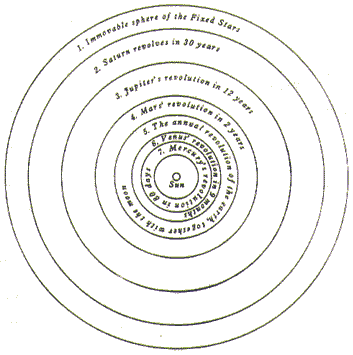William of Champeaux (c.1070-1122) was a student of
Anselm of Laon, and may have helped to compile the
Glossa interlinearis. He may also have been born many years earlier than the date assumed, since he was appointed Master of Notre Dame in 1094, and 24 years old would have been a very young Master to handle some of the issues of the day. He taught at the cathedral school of Notre Dame, and like Anselm was a proponent of Realism.
 |
| A medieval university lecture |
He also may have studied under the Nominalist Roscellinus of Compèigne. The Nominalists believed that universal/abstract concepts of Realism (which existed independent of our perceptions of things (think of Plato's myth of the cave) did not exist. Instead, there are only
particular things: there is
this chair and
that chair, but no universal and abstract
chair from which your and my chair derive. Words were either
significant or made up. A
significant word was intimately connected with the concept it described. Examples of words that are not significant are "chimaera" and "blictrix" and "hircocervus" because they are not real things. The extension of this approach leads to difficulties, because (as we know) we can talk about things that are untrue.
William, however, rejected Nominalism. He and Anselm of Laon were Realists. William is considered by some to be the founder of an extreme form of Realism, perhaps as a result of refining his views during debates with Peter Abelard.
One of the most famous students in Paris was Peter Abelard, more of whose writings have survived and been widely read than William's. Abelard debated with William numerous times over these concepts and others. Although Abelard (according to his own biographical work) lost every time, he calls William a jealous and defeated and discredited man, and claims that William was driven from the Paris schools. Even so, Abelard followed William in order to study under him further, which may be more telling than Abelard's criticisms of a man to whom he lost several arguments.
It is true that William left Paris. He went to the Abbey of St. Victor just outside of Paris. Two of his students from this time were Hugh of St. Victor and Bernard of Clairvaux, both of whom would greatly distinguish themselves. William continued to gain the attention of his superiors, as well, who moved him wherever they felt the need for a calm head and a devout reformer.
...and then, Champagne.
Champagne is a sparkling wine produced via a secondary fermentation in the bottle that produces carbonation. It is properly only made from grapes grown in the Champagne Valley region in northeast France, the boundaries of which are determined by law. This Champagne wine was first made notable when it was used at special occasions such as French coronation festivities. It was William in 1114, in his capacity as bishop of Chalons-sur-Champagne, who issued the
Grande charte champenoise (Great Champagne Chart). This "defined the agricultural and viticultural possessions of the Abbey of Saint-Pierre-aux-Monts, thus giving rise to the modern Champagne wine region." [
reference] Although the boundaries since then have been amended a few times, it was William of Champeaux, extreme Realist and theologian, who first determined what could rightly be called "champagne."
*
I apologize for not being better at explaining philosophical concepts; also, I do not even want to try to get into more detail, lest I get us both bogged down.













